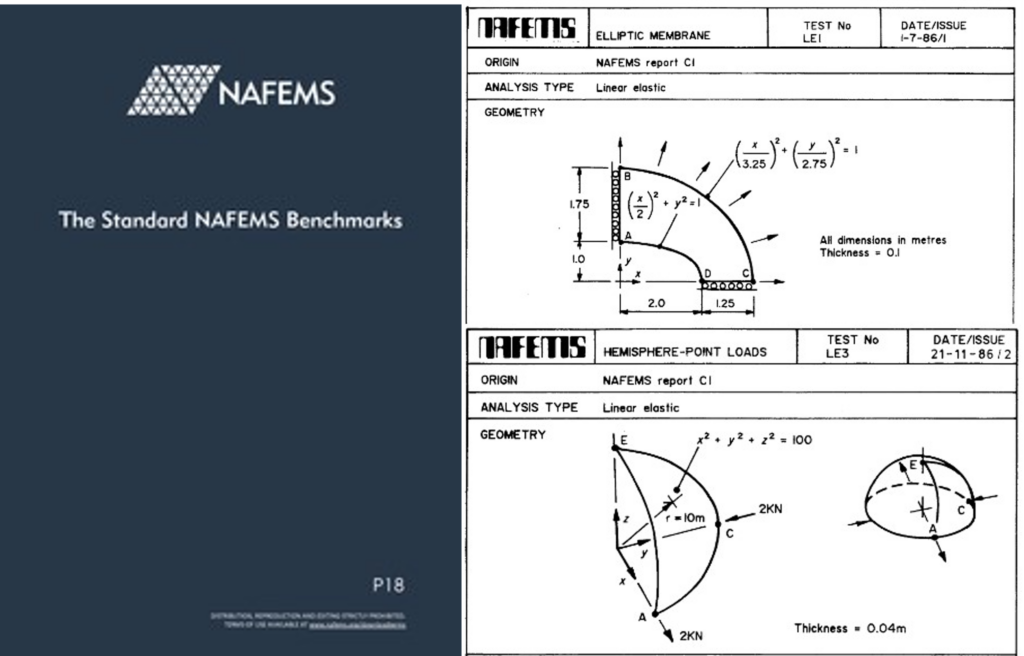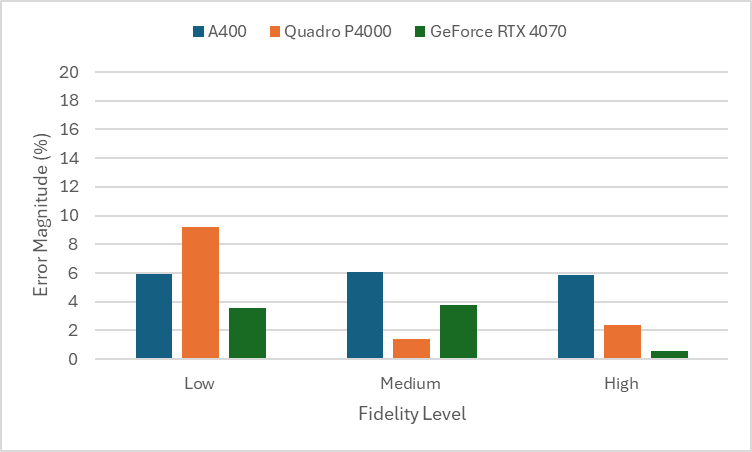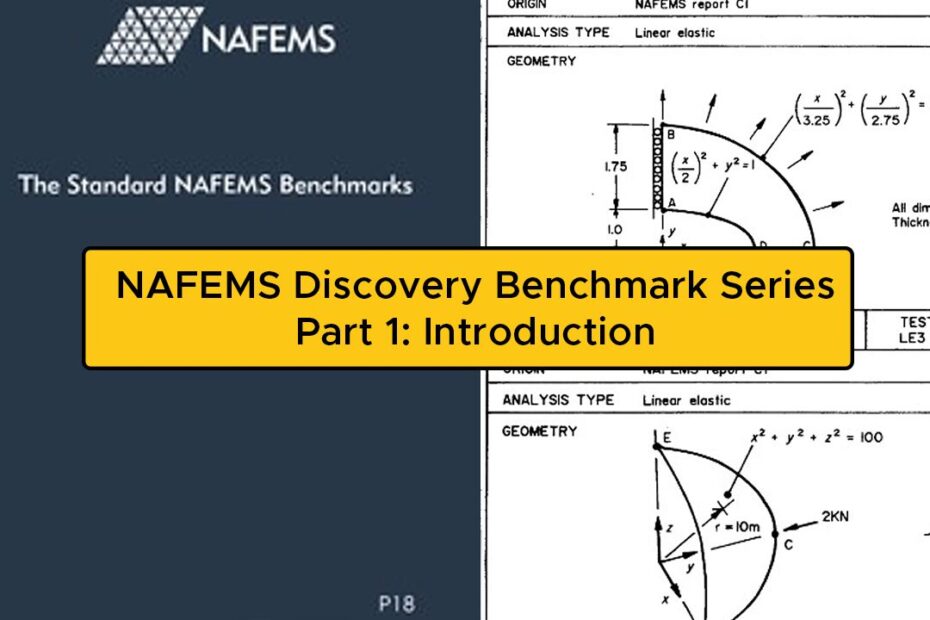In 1986, NAFEMS first published a set of benchmarks for FEA codes. The goal was to develop a set of standard tests that would more critically allow developers and users to interrogate the performance of their own and of other FEA software. Up to that point, it had been difficult for users to determine whether a specific software would provide accurate results for the types of problem they wished to use it for. A universal and comprehensive set of FEA tests would allow users to pick a simulation software that would allow them to perform the kind of analysis they were after.

The Standard NAFEMS Benchmarks, a publication by NAFEMS in 1986 proposing a set of standard FEA benchmarks to help prospective FEA users determine their solver of choice.
The NAFEMS benchmark tests capture a wide variety of geometric and load features. Many of these tests were designed to test how different element types performed. In Discovery Explore mode, only 3D solid elements are available. However, it is enlightening to investigate how Discovery performs in many of these test cases, where traditionally, alternate element types might be employed.
One of the primary advantages of Discovery is its ease of use and speed. Setting up a simulation is quick and easy, and you can jump between multiple types of simulation within the same process. The NAFEMS benchmarks test not only structural analysis, but also thermal and modal, all of which can be setup to solve concurrently.
One unique aspect of the Discovery Explore mode solver is its use of GPU resources. The GPU enables rapid mesh generation and solution, however, where traditionally an FEA solver is limited by system RAM, Discovery Explore mode is limited by GPU memory. As part of this benchmark series, three different graphics cards were used; the Nvidia Quadro P4000, the Nvidia A400 and the Nvidia GeForce RTX 4070. The GPU specifications are summarised below:
| RTX A400 | Quadro P4000 | GeForce RTX 4070 | |
|---|---|---|---|
| GPU Memory: | 4 GB GDDR6 | 8 GB GDDR5 | 12 GB GDDR6 |
| CUDA Cores: | 768 | 1792 | 5888 |
| Memory Interface: | 64-bit | 256-bit | 192-bit |
| Memory Interface Bandwidth: | 96 GB/s | 243 GB/s | 504 GB/s |
For Discovery Explore FEA simulations, by far the most important spec is the GPU memory, which controls how fine the mesh can become. As such, we would generally expect the level of accuracy for an equivalent Discovery mesh fidelity to go as RTX A400 -> Quadro P4000 -> RTX 4070.

Results for NAFEMS LE1 benchmark showing how the accuracy of results increases with graphics card memory.
Each benchmark will be run at three different fidelities; Low (1% fidelity), Medium (50% fidelity) and High (100% fidelity). Follow along with this series of blog posts to discover how Discovery handles challenging benchmarks and how this tool can improve your design workflow.
More in this series:
NAFEMS Discovery Benchmark Series – Part 2: Pressure Plates
NAFEMS Discovery Benchmark Series – Part 3: Simple Geometries
NAFEMS Discovery Benchmark Series – Part 4: Axisymmetric Geometries
NAFEMS Discovery Benchmark Series – Part 5: Discovery Scripting (Coming Soon)

